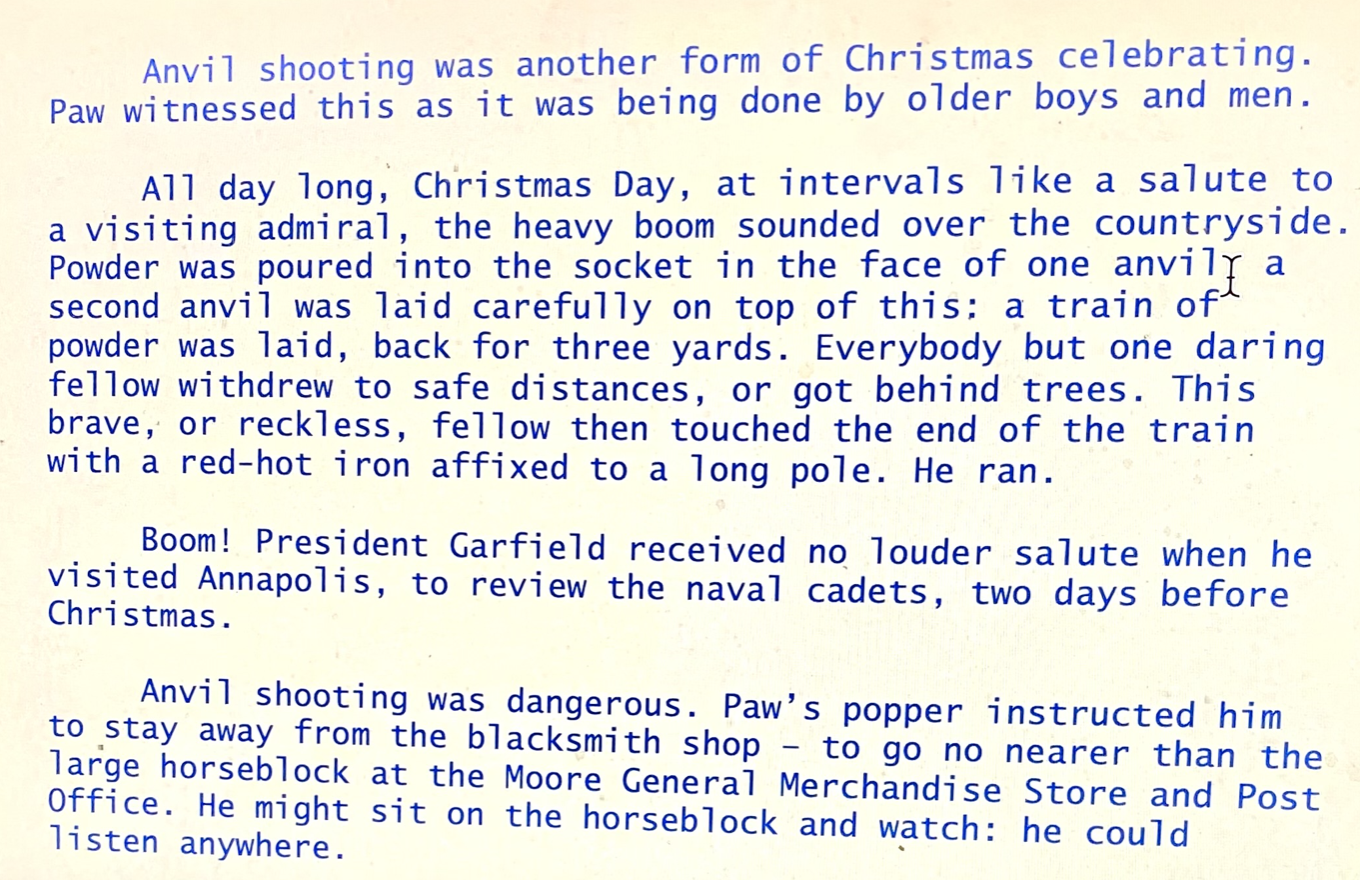Anvil-Shooting in Alabama
Anvil-Shooting in Alabama: A contribution to an appendix for “Robert’s Paw’s Boyhood.”
In reading “Robert’s Paw’s Boyhood” (see specific section below), I discovered something completely unknown to me, but very popular with Eli Barnes, his family, and friends. The description of “Anvil-Shooting” on page 109 introduced me to a popular form of Christmas celebration in the deep South in his day.
It seems totally archaic. But it is not. it is still practiced today, in many places in the rural South, with great glee. Formal contests are held and the internet is filled with articles and YouTube videos like this short one here:
Paw emphasized that creating a lot of noise was an important part of Christmas week. Firecrackers were abundantly used, especially by boys, as were roman candles in red paper wrappers marked with Chinese characters and bottle rockets. Surprisingly, Christian religion was subdued, but loud explosions were much admired. In another section of his book, Paw made it very clear how angry he felt when the Montgomery legislature passed a “no fireworks” ordinance.
In the first above picture, a hand can be seen lighting the six inch fuse leading to about a pound of ordinary black gunpowder. The powder is packed into hollows in the bases of two anvils. Typically the “base” weighs 200 pounds and the ‘flier” 100 pounds. And fly it does. An astonishingly loud explosion and cloud of white smoke are left up to 200 feet below the flier at the top of its arc. Where anvils returns to Earth is not an exact science so, as in Paw’s book, children are warned to keep well clear of blacksmiths and other enthusiasts lighting fuses.
Anvil shooting filled a serious need for very loud noise-making after the Civil War because Union troops had captured and removed to the North any field pieces and cannons, no matter how small or old. Historically, important towns in the rural South had a cannon in place, typically outside the town hall. These were not just to celebrate Christmas, but for long-range signaling. Firing the cannon was a means of communicating to far-flung farms and villages that something important was happening. Fires, Indian raids, a need for a town meeting, or the death of an important individual might be announced by a pattern of cannon fire signals.
Click on the video and meet image of Ray Wilkinson, a jovial anvil shooter who has won numerous championships in modern times. It should be noted that for competitions, his two anvils have been carefully machined to have flatter bases, creating a tighter seal between them, as well as larger hollows for the gunpowder.
While there are now specific rules for anvil shooting, the goals are the same: Make as much noise as possible and kick an anvil as high into the air as physics will allow. One thing that has not changed is that black powder is still mandated. No modern high explosives are allowed because they tend to blow older anvils into pieces … of shrapnel.
Robert B. Barnes, Jr
21 Feb 2024








